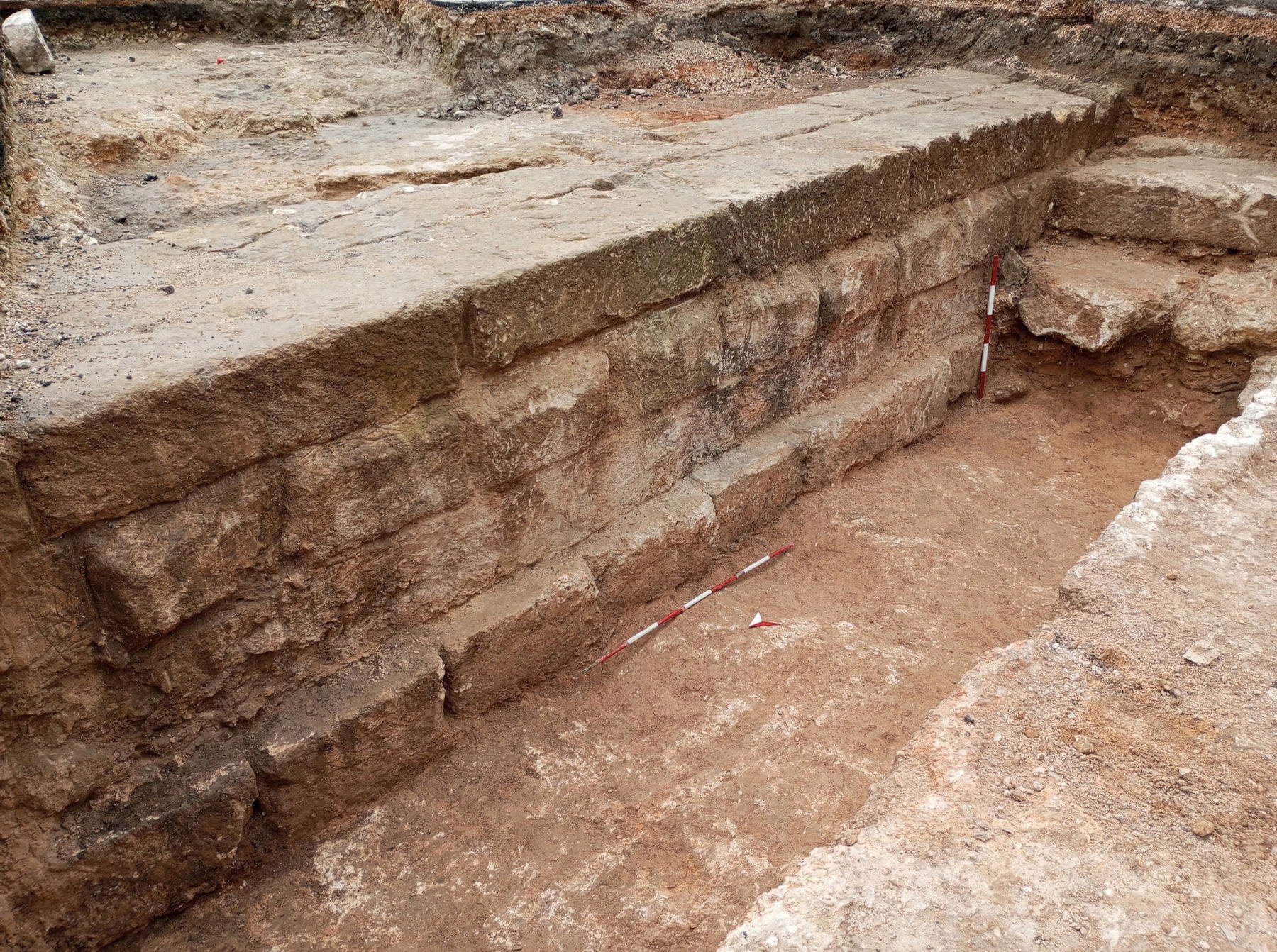The redevelopment of the F.S.E railway station in Manduria (Taranto), initiated as part of the HUB Project funded through the PNRR and implemented by Ferrovie del Sud Est, has led to the discovery of a new section of the Messapian fortifications. The discovery occurred during the procedure of Preventive Verification of Archaeological Interest required by the Code of Contracts and conducted under the scientific direction of the Soprintendenza Archeologia, Belle Arti e Paesaggio for the provinces of Brindisi, Lecce and Taranto. The investigations involved the internal area of the station square, located directly on the ancient urban layout of the city.
The execution of the archaeological operations was entrusted to the specialized company Museion Soc. Coop. and focused on stratigraphic essays aimed at verifying the possible layout of the Messapic defense system. The excavations returned a section of the intermediate circle of walls, built in the 4th century B.C., preserved up to four rows of elevated. The structure is composed of limestone isodomic blocks, worked with precision and laid dry alternating elements arranged head-on and shear. The wall identified is set within the moat that surrounded the older inner circle of the Archaic period, outlining a complex and articulated defensive stratification. The relationship between the two construction phases allows for a more precise reconstruction of the evolution of the wall system, which developed between the fifth and third centuries B.C. and was articulated in three circles that defined the extent of the city at different times.
In one of the stratigraphic essays, a short section of road axis located along the western edge of the moat also emerged. The presence of this road infrastructure testifies to the existence of an urban organization closely linked to the defensive system, suggesting the presence of functional routes for internal circulation and connections with the outside. The find thus assumes particular importance for the reconstruction of the wall circuit in an area long since compromised by the urban interventions of the early 20th century, which had obliterated many traces of the ancient settlement. The new data make it possible to more accurately define the course of the intermediate circle, supplementing the information already known thanks to excavations carried out in other portions of the city. In agreement with Ferrovie del Sud Est and in line with ministerial guidelines on the protection and enhancement of archaeological heritage, the best-preserved stretch will be preserved and left in view within the future intermodal hub. An appropriate layout, accompanied by information panels, will allow travelers to directly observe the walls of ancient Manduria, creating a link between the contemporary infrastructure and the nearby Archaeological Park of the Messapian Walls.


 |
| A section of the Messapian walls discovered during work at Manduria (Taranto) station |
Warning: the translation into English of the original Italian article was created using automatic tools. We undertake to review all articles, but we do not guarantee the total absence of inaccuracies in the translation due to the program. You can find the original by clicking on the ITA button. If you find any mistake,please contact us.